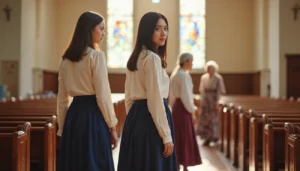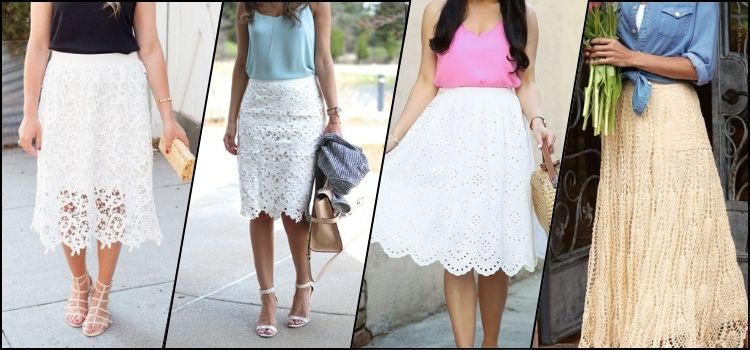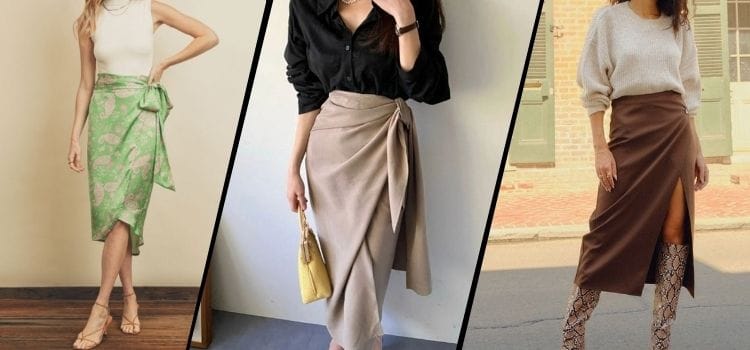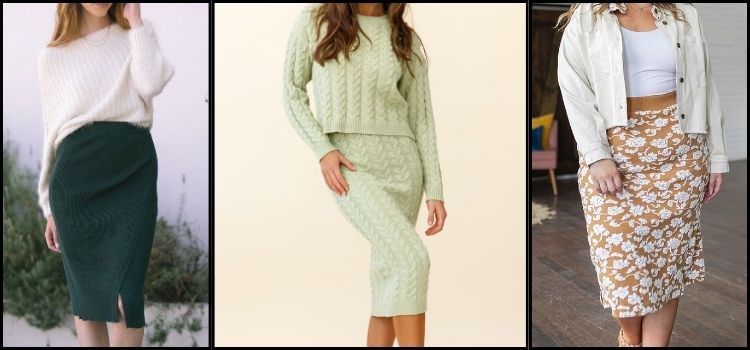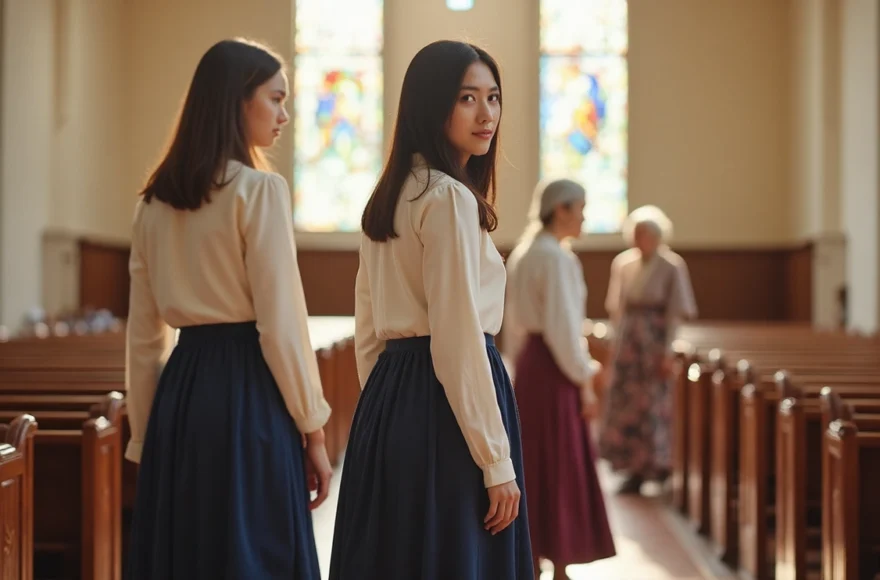What Do Ribbon Skirts Represent? । A Cultural Exploration

As an Amazon Associate, I earn from qualifying purchases
If you’re wondering What Do Ribbon Skirts Represent? then you’re search ends here. The art of storytelling is woven into every thread of the cultural fabric. For indigenous communities across the globe, this narrative expresses itself in vibrant color. It also appears in fine detail through the traditional ribbon skirt.
More than a garment, the ribbon skirt symbolizes a rich tapestry of history, identity, and resilience. Each stitch speaks volumes about the wearers. The culture they represent is also highlighted through its design.
Unpacking the Historical Origin
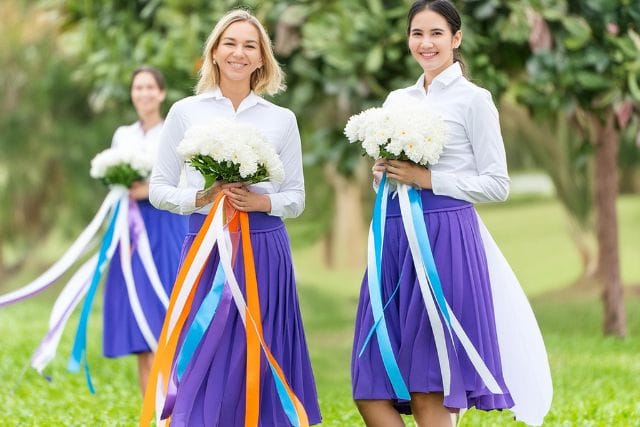
Anchor your understanding by acknowledging the profound roots from which these skirts spring. Ribbon skirts have a history dating back centuries, and their presence throughout indigenous communities underscores the narrative of strength in the face of adversity.
A Legacy of Resilience
Ribbon skirts are a manifestation of the strength of indigenous women, who historically bore the mantle of cultural preservation and community support. Wearing skirts during ceremonies and daily life continued ancestral traditions. This was especially important during eras when cultural suppression posed a significant threat.
An Art of Storytelling
Every ribbon, every color, and every hue tells an intricate tale of family, identity, and communal ties. The skirt, often adorned with broadcloth ribbons, expresses the creativity and individuality of the women who craft these stories into wearable legacies.
The Language of Color
Color is not merely a design element; for indigenous cultures, it is a language that communicates a myriad of meanings. Explore the significance of each hue in the ribbon skirt to appreciate the depth of its symbolism truly.
Red: The Vitality of Life
In many indigenous beliefs, red represents the vitality of life, the sacred nature of blood, and the resilience to endure. Red ribbons on a skirt signify the wearer’s connection to ancestral power and the continuation of life’s cycle.
Blue: Spirituality and Water
For some communities, blue represents spirituality and the significance of water—the giver of life. Wearing blue ribbons can symbolize a deep spiritual connection and acknowledgment of the essential life-giving force of water.
Yellow: Illumination and Warmth
Yellow is often associated with the sun, offering the warmth and illumination that guide the path of life. A skirt adorned with yellow ribbons might express the wearer’s gratitude for the natural world and the lessons that it provides.
Cultural Variations
While the symbolism of the ribbon skirt may have universal themes, it also has diverse interpretations specific to each indigenous culture. For example, the Ojibwe may interpret the act of wearing a ribbon skirt differently than the Lakota. Understanding these distinctions fosters respectful engagement with the traditions.
Ojibwe Ribbon Skirts
The Ojibwe people traditionally use ribbon skirts for ceremonial and medicinal purposes. For them, the skirt represents healing, and the colors and patterns denote specific medicinal plants.
Navajo Tradition
In contrast, the Navajo people have their version of the ribbon skirt, called the “tier skirt.” These skirts are often handwoven, with each tier representing a different phase of a woman’s life.
Evolution and Adaptation
Traditions naturally evolve with the passage of time. Discover how indigenous communities are revitalizing the art of the ribbon skirt. They ensure that it remains relevant and resonant today.

Modern Interpretations
Today, ribbon skirts are finding their way into mainstream fashion, a mark of appreciation for their aesthetic and cultural significance. Indigenous designers and fashionistas are not only keeping the tradition alive. Still, they are also innovating new styles that incorporate the timeless symbolism of these skirts.
Preserving for Posterity
Elders within indigenous communities play a crucial role in ensuring that young members are equipped with the skills and knowledge to craft traditional ribbon skirts. By passing down these practices, they preserve a vital piece of their heritage for generations to come.
Crafting a Tale of Your Own
Constructing a ribbon skirt is a story-making process—an art in itself. Each step resonates with tradition and carries its own symbolic weight as the wearer brings her creation to life.
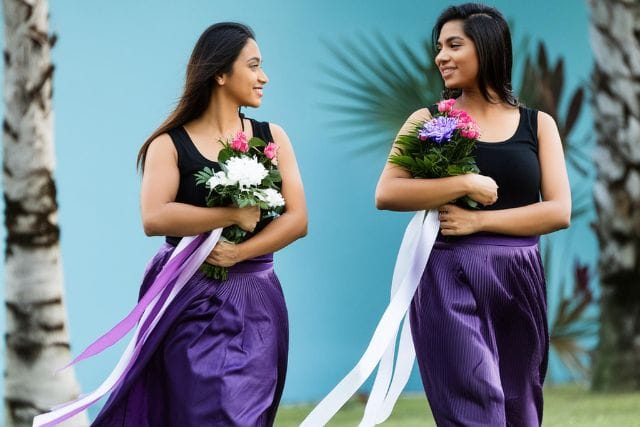
Material Selection
Choosing the suitable fabric and ribbons is the beginning of a ribbon skirt story. It is an intentional act that aligns the creator with the different qualities and meanings associated with each color and material.
Cutting and Sewing
The act of cutting the cloth and sewing not only constructs a garment but also weaves. Makers become storytellers, and each skirt bears a unique narrative, stitched together by hand with love and purpose.
The First Wearing
Putting on a ribbon skirt for the first time is a rite of passage. It marks the completion of a creative and deeply personal endeavor and the initiation of a symbolic practice that connects the wearer to her heritage.
Similar – Wear with a Wrap Skirt
The Reign of Ribbon Skirts
In conclusion, the ribbon skirt transcends the fabric and fibers from which it is made. It stands as a testament to the unyielding spirit of indigenous cultures. It continues to be a vibrant, evocative symbol of identity, community, and empowerment.
The tradition of the ribbon skirt is a testament to the resilience and beauty of indigenous cultures. Its modern presence celebrates the strength that these communities embody. You might be an artisan crafting a skirt. Alternatively, you might be an admirer enjoying the splendor of this symbolic garment. The lesson of the ribbon skirt is clear. Cultural traditions are not just to be preserved; they are to be lived and shared with the world.
FAQ
Are ribbon skirts worn for special occasions?
Yes, ribbon skirts are often worn during ceremonies, cultural events, and important life milestones. They are an essential part of indigenous traditions and are also worn to express individual identity and cultural pride.
What do ribbon skirts represent?
Ribbon skirts symbolize a rich history of cultural identity, resilience, and strength. They are worn by indigenous women to honor their heritage, with each color and design conveying deep personal and cultural stories.
How are ribbon skirts made?
Ribbon skirts are carefully crafted by hand, with each step—from fabric selection to sewing the ribbons—carrying deep symbolic meaning.
As an Amazon Associate, I earn from qualifying purchases



